Rogoznica
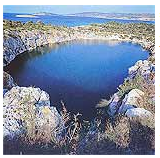
This municipality and tourist resort in the county’s southernmost area consists of two parts: the mainland called Kopaca and the Kopara islet, which was artificially connected with the mainland. The former has been inhabited since 1390 and the latter since 1518. St. John of Trogir church was built on the nearby Ploče reef in 1324. Old Croatian standing tombstones called “stećci” were found near the St Nicholas church (built in the Rožnice inlet). Homeland War volunteers from the nearby Zečevo were exceptionally effective in anti-aircraft defense.
Zmajevo jezero (Dragon’s Lake ), situated in the proximity of Miline bay and linked to the sea, stands out as the area’s natural phenomenon.
Primošten
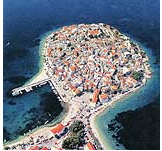
A well-known tourist resort situated on an islet was artificially connected to the shore by a land bridge. It is an extremely well preserved and valuable rural agglomeration. It was called Capur Cista (“naked head”) in old historical documents, the name Primošten first being mentioned in 1564 as a derivative of the verb “primostiti” (meaning: “to bridge over”). The parish church of St. George was built on a hill in the old part of Primošten in 1485 (restaurated in 1760). In the past, its inhabitants were mainly fishermen and wine producers. The region’s most famous wine is called “Babić” and it is a living proof of long wine producing tradition. The picture of these lace-like vineyards in stone can be seen in the U.N. building in New York . Apart from its tourist attractions, Primošten also homes a lot of interesting cultural events and art colonies.
Zaton
Founded in the XV century, it is set in the westernmost point of the Šibenik bay, where the Krka river meets the Adriatic . Old burial grounds (VI – I ct. B.C.) were discovered in the nearby Velika Mrdakovica area, as well as the ruins of old settlements and fortifications. In its outback one can see numerous vineyards and “maraska” cherry orchards. Zaton has a pier, boat storing facilities and a rowing track suitable for international competition.
Raslina
This village on the western bank of the Prukljansko lake was first mentioned in 1298 while the Šibenik diocese was being formed. In 1457 St Michael’s church was built. Remnants of ancient architecture can be seen in the lake, near Raslina. The legend of “Gavanovi dvori” (Gavan’s court) was formed around these underwater ruins. Also, one can see the remnants of St Stephen’s church (first mentioned in 1322) on the nearby tiny islet of St Stjepan( St Stephen).
Vodice
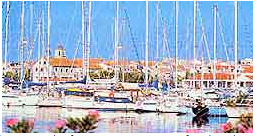
The town of Vodice is one of the most significant tourist centres of the entire Šibenik Riviera . Archeological findings prove that people lived there in the Roman period. The settlement was then called Araua or Araus Antonina. Vodice (roughly translated as “waters”) and its surroundings are rich with natural spring water, which provided the town’s name. The first written mention of Vodice dates from 1402, the Holy Cross church on the old cemetery from 1421 and the parish church (bearing the same name), in the town centre, from 1746. The only remainder of the 1664 town’s fortification is the Čorić tower. Apart from a rich tourist offer, nightlife and entertainment (“vodička fešta”), Vodice also hosts a lot of very interesting cultural events.
Tribunj
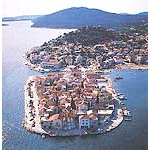
Its old part was built on an islet. A stone bridge was built later connecting it with the mainland where a new settlement was formed. It was first mentioned in 1463 as Tribahunj. The old St.Nicholas’ church was built next to the old cemetery in 1452. A fortress named Jurjevgrad was built on the Sv. Nikola hill for defense against Turks. As their activities in the tourist sector grow, the inhabitants continue their fishing and olive oil producing tradition. During their summer festivities they host a famous Donkey Race.
Pirovac
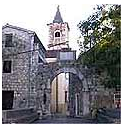
This old Dalmatian settlement, today a municipality, was first mentioned in as far back as 1298. Monuments of great historical and cultural value stand out: the old town walls (1505) and St. George’s church (1506), both built by Petar Dragunić. The remnants of an old Franciscan monastery (1511) as well as those of ancient Roman civilization were found on the nearby St. Stephen’s island. The population’s growing interest is tourism (the biggest number of holiday flats in the Šibenik region). In the summer they organise a famous street soccer tournament (oldest in the region) and a donkey race.
